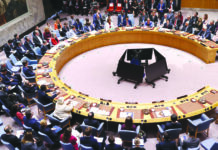Prime Minister Imran Khan has time and again shared his vision of achieving environmental sustainability in Pakistan. However, with each passing year we wonder if the ‘Clean and Green Pakistan’ is a vision or a dream, the realization of which depends on Pakistan’s fate rather than government policies and system transformation. Based upon the Global Environmental Performance Index (EPI) 2020, Pakistan stands at the 142nd position out of a total of 180 countries in environmental health and eco-system vitality. Denmark is the country that tops the EPI 2020. The green transformation journey of Denmark is based on the principles of Circular Economy and Public-Private Partnership (PPP). Their green transformation is based on holistic collaboration across all economic sectors for the development of integrated, affordable and sustainable environmental solutions. An example of this synergistic philosophy is the joint renewable energy initiatives between Denmark’s water and electricity sector, where sludge from wastewater treatment plants is used to produce energy. Similarly, the waste collected by the waste management companies is used to produce heat and electricity. These green initiatives depict a circular economy through Public-Private Partnership (PPP) for the attainment of environmental sustainability. In order to move forward in the journey of economic and environmental sustainability, Pakistan needs to focus on the potential pitfalls in the current policies and systems that may be hindering its green transformation.
Pakistan’s banking industry can play a pivotal role in this journey through the ideology of Green Banking. It is the elixir required for the development and growth of green industrialization and urbanization in Pakistan. Unfortunately, Green Banking adoption faces a number of adoption challenges including the lack of awareness among the concerned stakeholders, lack of Green Banking trainers, experts, or Green Banking consultants that can guide the banking industry, absence of local industry best practices, shortage of third-party green vendors or contractors, insufficient regulatory reforms, and low level of green capability among bank staff.
The SBP launched the Green Banking Guidelines in 2017 as a set of voluntary initiatives for the banks and DFIs. In the Green Banking guidelines, the SBP has directed the banks to set up Green Banking Offices. The guidelines suggest that the designation of the Chief Green Banking Manager can be assigned as an additional charge to an existing bank official. A person given an additional charge may not be fully focused on Green Banking adoption due to other official duties. At this stage, the SBP should move towards mandating that Green Banking should be adopted through a full-fledged Green Banking department with dedicated staff having expertise and knowledge in the area.
It is the responsibility of both the policy makers and the banking industry to adopt and implement this ideology as the precursor to the creation of a sustainable economic system in Pakistan. Government policies should be centered on the synergistic and simultaneous achievement of economic and environmental sustainability through Public-Private Partnership. If the government connects its various developmental projects like the Naya Pakistan Housing Scheme, CPEC projects or E-vehicle with Green Banking, it can simultaneously increase economic and environmental sustainability.
The Pakistan banking industry is also moving forward in the Green Banking adoption journey, but requires additional policies and frameworks from the SBP, especially in the area of Green Financing. Green finance is moving into the mainstream of finance as policy, regulation and market forces combine to align financial institutions, activities and operations with the aims and objectives of the Paris Agreement and UN-SDGs 2030. Zmong our neighboring countries, China launched the mandatory Green Credit policy in 2007 and Bangladesh launched mandatory Green Banking regulations in 2011. The Central Bank of Bangladesh has made it mandatory for 2 percent of all financing by the banks to be dedicated to green projects, such as vrenewable energy schemes. In addition, banks have been instructed to dedicate 15 percent of their loan portfolios to wider sustainable finance projects.
Currently, the majority of the banks in Pakistan have large environmentally friendly financing portfolios but do not have the regulatory guidelines for reporting it under the Green Banking umbrella. They do not have knowledge of how to embed their existing environmentally friendly financing portfolios into green financing.
The SBP should guide the banks about the reporting of green financing so as to improve the collective KPIs of the banking industry, such as financing of zigzag technology, blue financing, alternate energy generation, organic farming or green construction projects. SBP should develop a system/framework for the reporting of a bank’s financing portfolio according to the United Nations-Sustainable Development Goals (UN-SDGs) 2030. This can greatly benefit Pakistan’s environmental KPI compliance status and accurately report the Green Finance potential in Pakistan. The SBP should setup a Green Banking advisory portal or dedicated department for guidance of banks. Banks should also be guided for the development of digital/Smart bank branches, augmenting the digitalization of Pakistan’s banking industry. Green Banking facilitation counters may be set up in bank branches for creating customer awareness. Currently, the Pakistan banking industry is confused about the implementation of various Green Banking initiatives and thus the issuance of additional Green Banking policies, including Green Financing regulations or Green product development policy and framework, from the SBP may help the industry move forward.
It is the responsibility of both the policy makers and the banking industry to adopt and implement this ideology as the precursor to the creation of a sustainable economic system in Pakistan. Government policies should be centered on the synergistic and simultaneous achievement of economic and environmental sustainability through Public-Private Partnership. If the government connects its various developmental projects like the Naya Pakistan Housing Scheme, CPEC projects or E-vehicle with Green Banking, it can simultaneously increase economic and environmental sustainability.
The usage of the country’s pension funds on green bonds or investment in green projects can also revitalize the country’s green growth plan. Green Banking can help Pakistan in the attainment of UN-SDGs 2030 and greatly improve the global environmental KPI reporting and green brand image. It is time that SBP leads the way with concrete, measurable, and time-frame bounded strategies for Green Banking adoption.






















